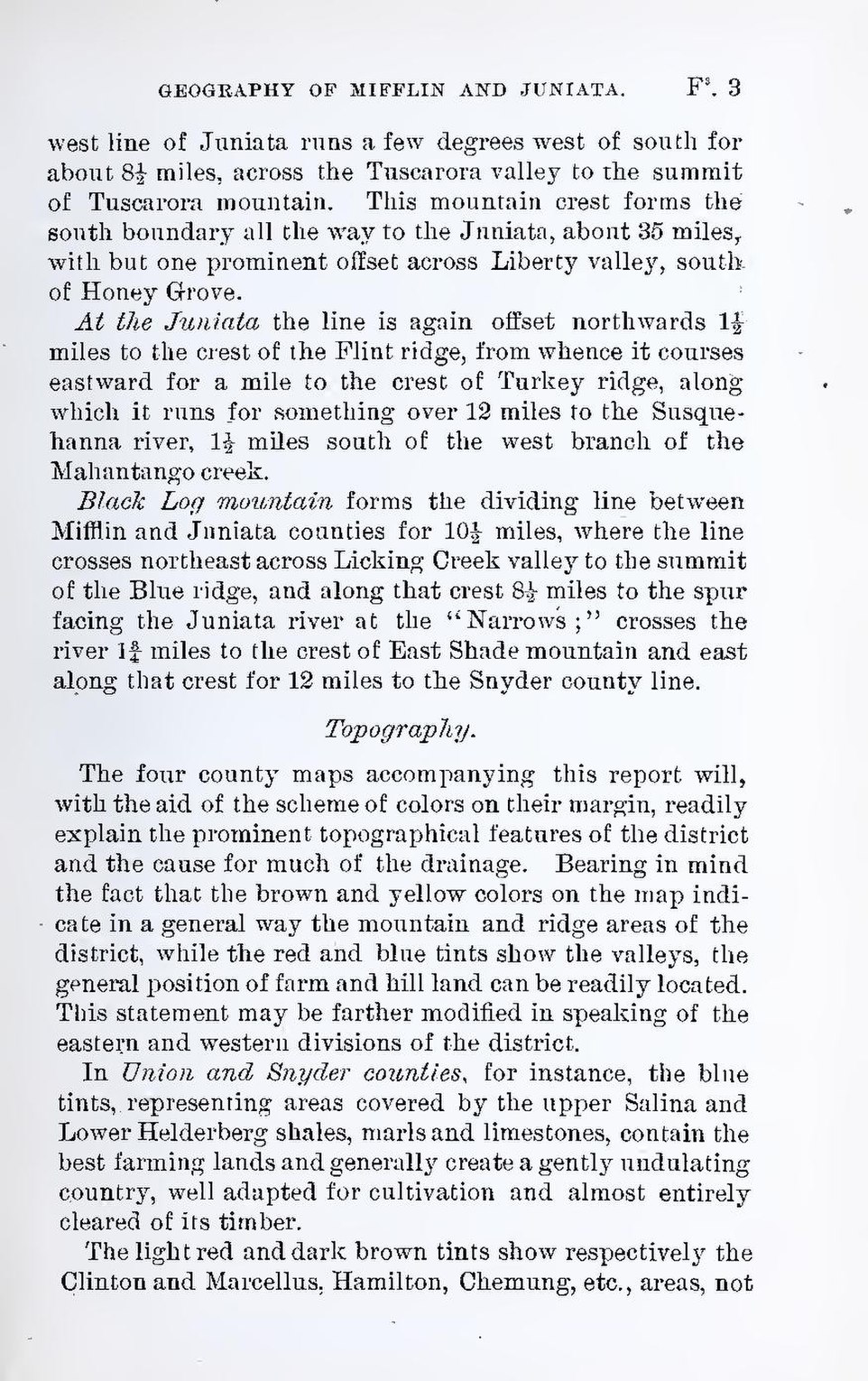west line of Juniata runs a few degrees west of south for about 8½ miles, across the Tuscarora valley to the summit of Tuscarora mountain. This mountain crest forms the south boundary all the way to the Juniata, about 35 miles, with but one prominent offset across Liberty valley, south of Honey Grove.
At the Juniata the line is again offset northwards 1½ miles to the crest of the Flint ridge, from whence it courses eastward for a mile to the crest of Turkey ridge, along which it runs for something over 12 miles to the Susquehanna river, 1½ miles south of the west branch of the Mahantango creek.
Black Log mountain forms the dividing line between Mifflin and Juniata counties for 10½ miles, where the line crosses northeast across Licking Creek valley to the summit of the Blue ridge, and along that crest 8½ miles to the spur facing the Juniata river at the “Narrows;” crosses the river 1¾ miles to the crest of East Shade mountain and east along that crest for 12 miles to the Snyder county line.
Topography.
The four county maps accompanying this report will, with the aid of the scheme of colors on their margin, readily explain the prominent topographical features of the district and the cause for much of the drainage. Bearing in mind the fact that the brown and yellow colors on the map indicate in a general way the mountain and ridge areas of the district, while the red and blue tints show the valleys, the general position of farm and hill land can be readily located. This statement may be farther modified in speaking of the eastern and western divisions of the district.
In Union and Snyder counties, for instance, the blue tints, representing areas covered by the upper Salina and Lower Helderberg shales, marls and limestones, contain the best farming lands and generally create a gently undulating country, well adapted for cultivation and almost entirely cleared of its timber.
The light red and dark brown tints show respectively the Clinton and Marcellus, Hamilton, Chemung, etc., areas, not
